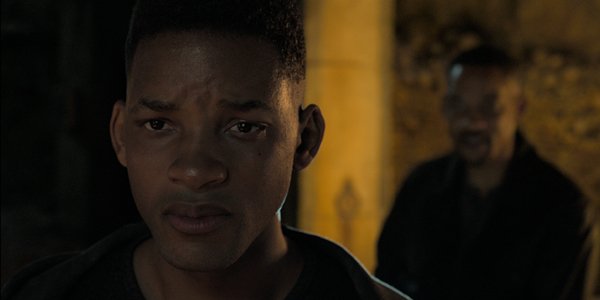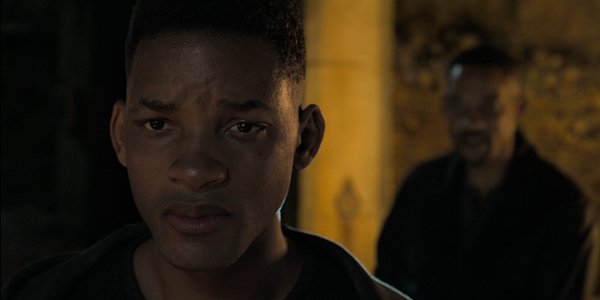Products You May Like

Between the ever-expanding home video market and the rise of countless streaming services, studios in the modern era are constantly looking for ways to get people into movie theaters. One of the most famous examples of this is the rise of 3D, but in the decade since Avatar the market for that particular artistic tool/gimmick has dwindled considerably. Still, there is hope in the industry that the next big thing to reinvent the cinematic experience is right around the corner.
This is where high frame rate (or HFR) comes in. While most films are shot and projected at 24 frames per second – which is the minimum speed required for the human eye to comprehend fluid motion in stitched images – there has been increased experimentation in recent years by filmmakers who are curious about the aesthetic possibilities that go beyond that number. After all, movies look very different when the brain of an audience member doesn’t have to subconsciously fill in the blanks between frames (which is something that happens every time you sit down to watch a movie). Shooting at a higher frame rate serves to eliminate the motion blur created by that particular visual phenomenon, and it makes the picture appear smoother and more fluid.
A few years back, Peter Jackson tried to bring HFR into the mainstream by making it a part of the Hobbit experience, but now Ang Lee is making an attempt of his own to take the format to the next level. The director’s next movie, Gemini Man, is the latest big blockbuster to be shot at a higher frame rate – though Lee has taken things a bit further than his Kiwi colleague. While the second Middle-earth trilogy was filmed at 48fps, the new action movie starring Will Smith has nearly tripled that figure by shooting at 120fps, and having personally seen some footage from the feature I can tell you that it’s unlike anything you’ve ever seen.
This past week I was part of a group of journalists invited to a special Gemini Man first look event at the Paramount Pictures lot in Los Angeles, and in addition to watching a panel discussion with Ang Lee, Will Smith, and producer Jerry Bruckheimer we all got to see a debut presentation of footage from the movie in its original frame rate. Three scenes in total were shown, equaling about 20 minutes, and it was honestly shocking to recognize just how different the experience really is.
As the lights in the theater went down and the scene began to play, the changed frame rate wasn’t immediately noticeable. While the photography appeared to perhaps be a bit brighter than your average modern action movie, the alteration from the norm wasn’t fully perceivable as a street level establishing shot of an apartment building cut to an overhead of Henry (Will Smith) inside lying still in bed. Everything changed, however, when a sound caused Henry to jolt up, and I noticed the complete lack of motion blur present. Suddenly I experienced what can really only be described as the sensation of a sort of light switch click in my brain as my eyes were forced to quickly adjust to what felt like a wholly new visual presentation. As Henry raced around the screen warning his friends (Mary Elizabeth Winstead, Benedict Wong) about an impending attack by a character we later learn is a younger clone of himself, I practically had to shake my head while trying to acclimate myself.
One of the chief complaints about HFR in the past is that it can have the effect of making things look cheap, as the picture can be reminiscent of video-shot soap operas, but that wasn’t my read on Gemini Man. Instead, the chief takeaway in the moment is that it made everything appear hyperreal. Paired with 3D, I legitimately got the sensation that I wasn’t so much looking at a screen as I was looking through a window. Minus the sheen of film, everything looks vibrant and deep, and even certain elements – most noticeably explosions – had a completely different look than what we typically see in blockbusters. It added a particular visceral quality to the action as foot chases and shootouts played out on screen.
It was a fascinating preview overall, but one that also suggests that Gemini Man may have some unique issues when audiences get to see it in the fall. The first is the way in which the high frame rate interacts with the advanced visual effects used to create Will Smith’s younger self – who is named Junior in the movie. There are particular extra demands that the presentation requires from the digital artistry used to bring Junior to life, and the way in which HFR highlights detail in cinematography could perhaps ultimately be a bit too high a hurdle (there were some occasional moments where he looked a bit more like a video game character than perfectly lifelike).
How the HFR plays also seems to vary a bit based on the demands of a given setup in the story – which seemed to be something purposefully showcased in the footage that was shown. While the first scene was a day-set action sequence that had characters running around in open areas with lots of daylight, the second was set entirely in a dark skeleton-filled crypt, and the third was an emotional moment in brightly-lit office. Based on what I saw, the material that had the most amount of light looked better than that which didn’t, and for what should be obvious reasons, it was definitely a lot easier to adjust to the frame rate when people are just standing and talking instead of throwing punches.
Ang Lee has some personal history with 120 fps, as that was how he shot his last feature, 2016’s Billy Lynn’s Long Halftime Walk, but Gemini Man promises to be a very different kind of experience – particularly because of the influence of genre. Discussing how the two projects compare, Lee admitted during the panel following the footage that he was a bit out of his depth when working with HFR the first time, but that the chance to make this new movie with Will Smith allowed him to properly take advantage of its best properties this time around:
With Billy, that was the first time I tried this media, and I was really overwhelmed. It was like I all of a sudden had to swap to a new religion. Like what am I going to do?… For this, I start to feel like I know what I’m doing now. It’s through [self-teaching] and also you learn from all the crews. Everybody is trying to make this media work. For this I jumped to a total opposite direction. This is total artifice; it’s a fictional story that’s premise is as a genre movie and we try to make it look beautiful.
It’s a bold experiment, and it won’t be long until we see the finished result. Gemini Man, which stars Clive Owen in addition to Will Smith, Mary Elizabeth Winstead, and Benedict Wong, will be heading to theaters everywhere on October 11th – and we’ll have plenty more coverage of the film coming your way between now and then, so be sure to stay tuned here on CinemaBlend.

